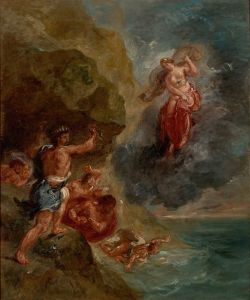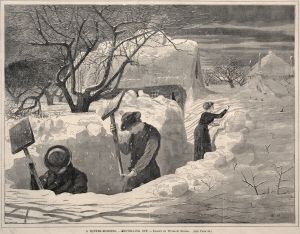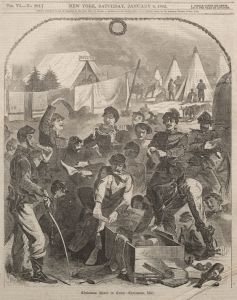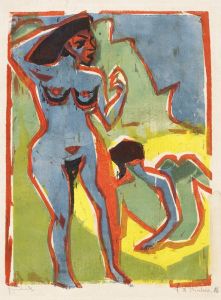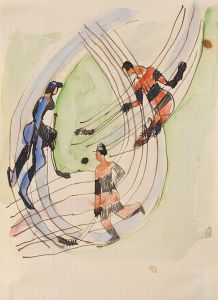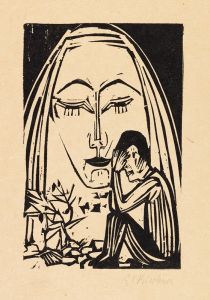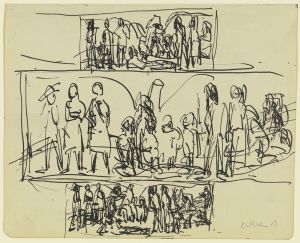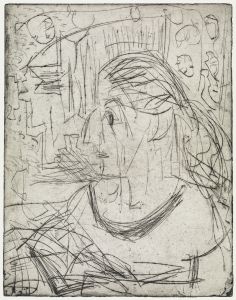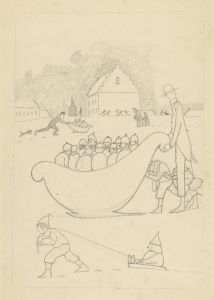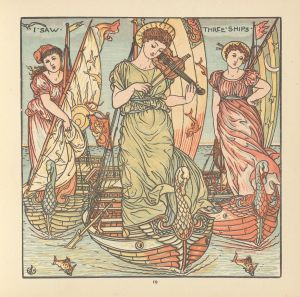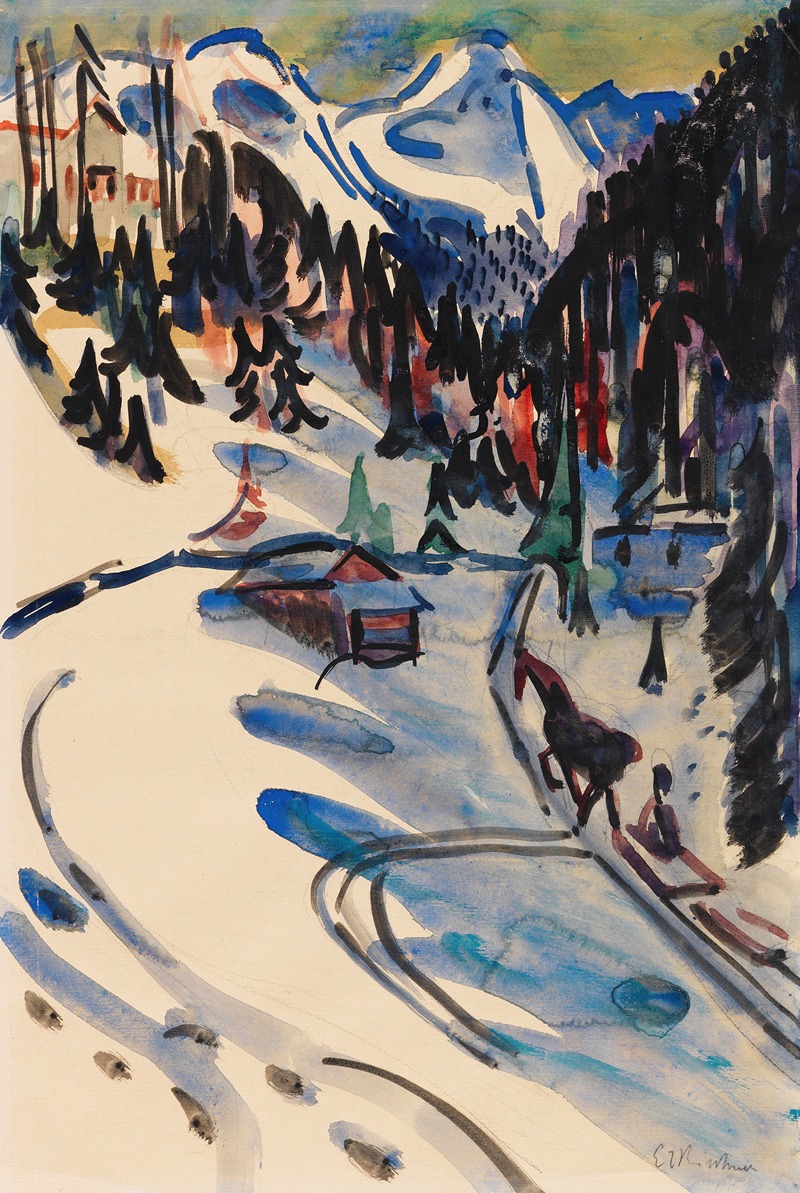
Sertigtal im Winter
A hand-painted replica of Ernst Ludwig Kirchner’s masterpiece Sertigtal im Winter, meticulously crafted by professional artists to capture the true essence of the original. Each piece is created with museum-quality canvas and rare mineral pigments, carefully painted by experienced artists with delicate brushstrokes and rich, layered colors to perfectly recreate the texture of the original artwork. Unlike machine-printed reproductions, this hand-painted version brings the painting to life, infused with the artist’s emotions and skill in every stroke. Whether for personal collection or home decoration, it instantly elevates the artistic atmosphere of any space.
Ernst Ludwig Kirchner, a prominent German expressionist painter, created the artwork "Sertigtal im Winter" during a period of significant personal and artistic development. Kirchner was a founding member of the influential artist group Die Brücke, which played a crucial role in the evolution of modern art in the early 20th century. His work is characterized by bold colors, dynamic compositions, and a focus on the emotional and psychological aspects of his subjects.
"Sertigtal im Winter" is one of Kirchner's notable works from his time in Switzerland, where he moved in 1917 following a period of personal turmoil exacerbated by his experiences during World War I. The move to Switzerland marked a new chapter in Kirchner's life and artistic career, as he sought solace and inspiration in the serene landscapes of the Swiss Alps. The Sertigtal, a valley near Davos, became a recurring subject in his work, reflecting his deep connection to the natural environment and his desire to capture its essence through his unique expressionist style.
The painting "Sertigtal im Winter" exemplifies Kirchner's ability to convey the stark beauty and tranquility of the winter landscape. His use of vibrant colors and bold brushstrokes captures the crispness of the snow-covered valley, while the simplified forms and dynamic composition reflect his expressionist approach. Kirchner's depiction of the Sertigtal is not merely a representation of the physical landscape but an exploration of the emotional and spiritual resonance he found in the natural world.
During his time in Switzerland, Kirchner's work evolved to incorporate a greater emphasis on landscapes, moving away from the urban scenes and human figures that dominated his earlier work. This shift was partly influenced by his surroundings and his desire to find peace and stability in the aftermath of the war. The Swiss landscapes provided a new source of inspiration, allowing Kirchner to experiment with color and form in ways that reflected his personal journey and artistic vision.
"Sertigtal im Winter" is a testament to Kirchner's resilience and adaptability as an artist. Despite the challenges he faced, including health issues and the impact of the war, he continued to produce works that pushed the boundaries of expressionism and contributed to the broader modern art movement. His paintings from this period are celebrated for their innovative use of color and form, as well as their ability to convey the profound connection between the artist and his environment.
Kirchner's legacy as a pioneer of expressionism is firmly established, and his works, including "Sertigtal im Winter," continue to be studied and admired for their artistic and historical significance. The painting remains an important example of his later work, illustrating his enduring commitment to exploring the depths of human emotion and the beauty of the natural world through his art.





